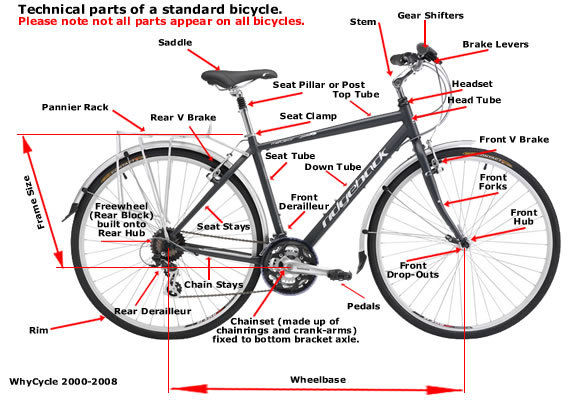Orders over $50 ship FREE
How Often Should I Replace My Bicycle Tires?Typically you will replace your mountain or road bicycle tires when:
1. They are worn out
2. You're not happy with way your bike is performing and you think new mountain or road tires will help.
Reason #1 - SafetyA common question is: How long do Hybrid or Road tires last? The conventional wisdom is that your road bike tires last anywhere from 1,000 to 3,000 miles. High-end (more expensive) tires should last at least 2,500 miles. Racing bicycle tires, which are designed for speed and high-performance, may need replacing after 1,000 miles, but tough bicycle touring tires can last as
long as 4,000 miles. The most common sign that your bicycle tires should be replaced is a sudden streak of flat tires.
Bicycle tires wear with age, too. If your bike is stored your tread will not wear out but your tire can harden and crack with age. If your bike tires are cracking or fraying do not ride your bike until you're replaced your tires. We also recommend when you replace your road or mountain tires you should replace the inner tubes also.
As rubber wears away there is less and less standing between the inner tube and the junk on the road or goat heads on the trail.
There’s a reason tears and tears are spelled the same way. A rip in your tire is often the end of that rubber’s usefulness. If you’re on the road, you can temporarily boot a tear with a folded up dollar bill or the boot included in the Tire Book Patch, but once you get back to home, it’s time to do some shopping and replace that tire.
You can often identify a tear before it’s an issue by checking your tires regularly for bulges.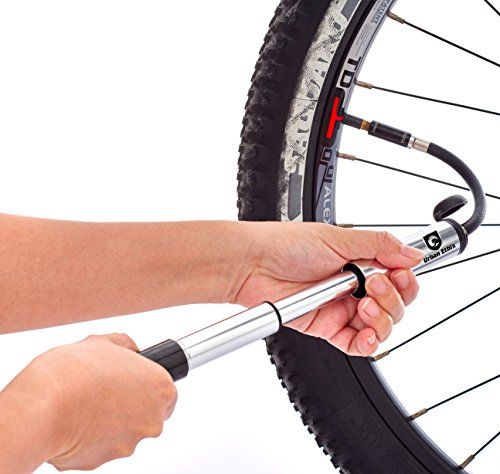 If you see something growing that looks like a tire tumor, there’s a weakness in the rubber and it’s only a matter of time before it tears and your tube suffers a blowout. Replace the tire before your next ride or you might have the other tears which we would hate to see you have.
If you see something growing that looks like a tire tumor, there’s a weakness in the rubber and it’s only a matter of time before it tears and your tube suffers a blowout. Replace the tire before your next ride or you might have the other tears which we would hate to see you have.
When it gets to the point that every stray piece of glass, rock, etc… is costing you a patch it’s probably time to make a change. Before installing your new tires keep in mind you can install tire liners which help prevent flats.
Reason # 2 - Controlright bike tires for your bicycle, the first thing to know is what size you need. To determine this, simply look at the side of your tire where you'll find a size marking or a tire label with the tire size on it. Common sizes include 26 x 1.5; 26 x 2.0; 700 x 25c or 29x 2.35. There are many tire sizes so be sure to write it down before ordering on-line or going to your local bike store.
When you replace your mountain or road tires, you must match diameters, so if you have 26-inch wheels, only 26-inch tires will fit. You can usually change widths, for example, switching from a 26 x 1.5 tire to a 2.0 model puts you on a wider tire that holds more air, which you might like for more comfort, traction and control. Conversely, someone who road rides might switch from 700 x 28c tires to 23c tires to save a little weight for easier climbing and faster acceleration. While, if you were suffering frequent flats and a rough ride on narrow tires, you'd benefit by switching to wider tires for more control and comfort
You can usually change widths, for example, switching from a 26 x 1.5 tire to a 2.0 model puts you on a wider tire that holds more air, which you might like for more comfort, traction and control. Conversely, someone who road rides might switch from 700 x 28c tires to 23c tires to save a little weight for easier climbing and faster acceleration. While, if you were suffering frequent flats and a rough ride on narrow tires, you'd benefit by switching to wider tires for more control and comfort
Keep in mind that not all rims and bike frames accept all possible tire widths. Usually going up or down one or two widths will work. If you're considering a big jump up or down contact us to get recommendations.
Reason #3 - Peace of mindWe often get asked should I rotate my Mountain or Road Bicycle Tires?
Your rear tire will likely wear at a much higher rate than your front because a majority of your weight is on the back wheel and it’s responsible for your acceleration and drive.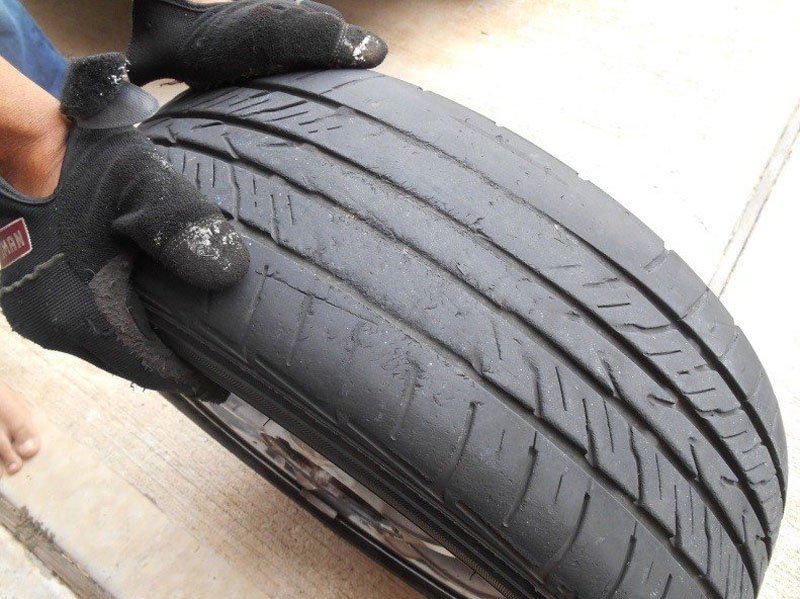 That means you’ll probably need a new rear tire long before you need a new front tire, so let’s talk tire rotation.
That means you’ll probably need a new rear tire long before you need a new front tire, so let’s talk tire rotation.
You never want to put a worn tire on your front wheel. I know it’s tempting, but your front tire’s traction is responsible for your steering and braking. Can you imagine losing traction and crashing? (Ouch). Losing traction on your rear wheel is much easier to save and you just look like you were doing a sick whip skid. So, if your rear tire’s worn but your front’s in decent shape, you can move your front tire to the rear, buy one new tire and pop it on your front wheel! You’re good to go!
If you are a mountain biker for example, mountain bike tires will probably cost between $30-99 USD. Keep in mind, there are numerous tread patterns, widths, wheel size variations that you have to be aware of. It's the same for road bike tires there are tires that have flat protection or puncture resistance available which typically will cost more but well worth every penny.
Fortunately, manufacturers have pulled out all the stops to provide excellent bicycle tires for all purposes. From built-in armor for puncture protection to supple casings that conform to the road surface for incredible handling, to dual-compound tread that's durable on top for long wear and sticky on the sides for grip, today's tires offer an impressive array of features and benefits. Manufacturers like Maxxis, Giant, Continental, WTB, Schwalbe, Surly, Serfas, Kenda and Tioga and many more have spent years developing strong, durable and reliable tires.
Now, pop on that new tire and tube because miles of adventures are waiting for you. It's Your World, Ride it!
We want to make sure you have all the information you need to select the correct size and model. If you have any questions or would like recommendations please contact us at [email protected].
If you enjoyed this article share it with a friend and leave us a comment.
Shop Tires
Back to blogReach us Monday-Saturday 9-6 PST
Store Hours: Tuesday-Saturday 11:00 am - 6:00 pm
Find a Bicycle Warehouse Store Near You!
1 / of 4
View all
Your cart is empty
If you love to go on long trips off-road, it is best to be prepared for the unexpected during your journey.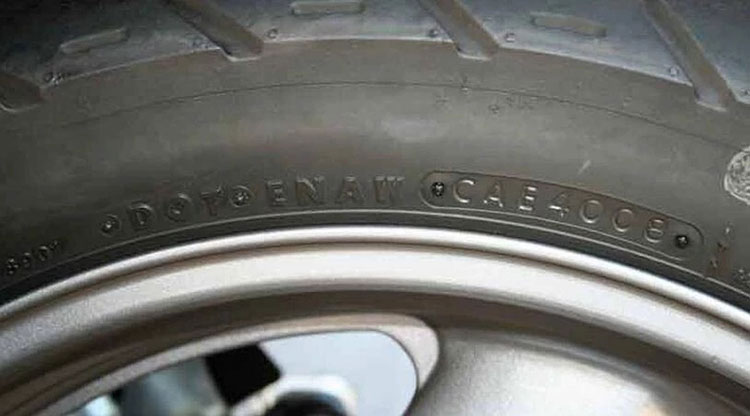 The last thing you want to happen is to have a flat tire in the middle of nowhere.
The last thing you want to happen is to have a flat tire in the middle of nowhere.
That’s why knowing how long do bike tires last is crucial. A standard bicycle can live from 1,000 to 3,000 miles. But there are plenty of factors you should consider first. Get to know them here.
Table of Contents
The answer depends on your type of bike. If your bike is designed for off-road trail adventures, but you only use them on asphalt roads, then the answer is yes!
Trailing bikes are designed with an out-of-this-world ruggedness, and that includes their tires. If you don’t use it on rough roads most of the time and you mix it with proper care, then your trailing tires can definitely ace up an 8,000-mile trip.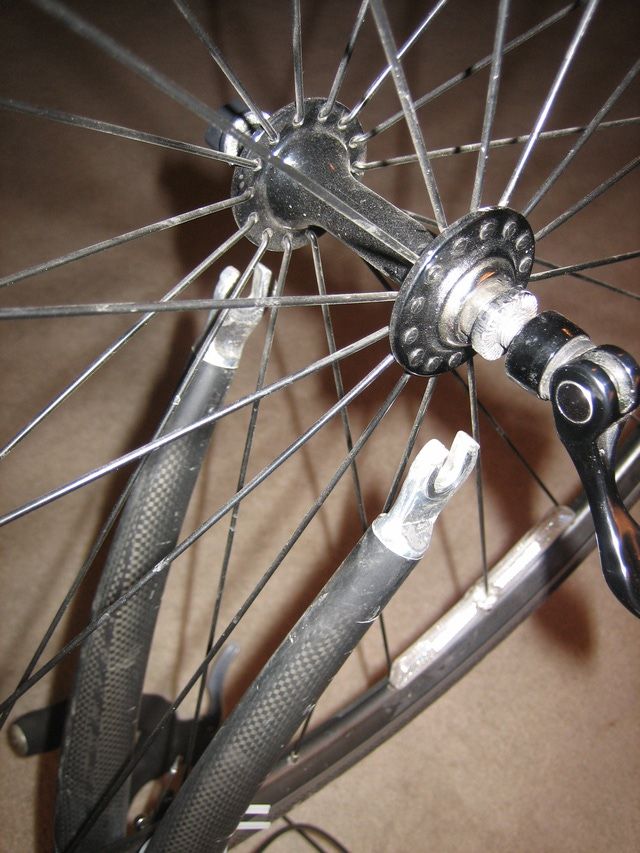
Just like humans and animals, different tire types have different average lifespans. But of course, a handful of factors go into a bike tire’s lifespan, too.
In general, an average bike tire can get anywhere between 1,000 and 3,000 miles. Granted, the distance disparity comes off great, even in standard ones.
If you have specialized bike tires, you can enjoy a bit more distance. The usual mileage you can have from rupture-resistant tires or touring-intended tires is 3,000.
Racing Tires are the ones that live the shortest. They are built with minimal design and optimum racing performance, so durability is often compromised. They can only go a little bit higher than 1,000 miles.
Road tires range from 1,000 to 3,000 miles, depending on your care. High-end tires should go more than 2,500 miles, given their price.
Even though touring tires can last up to 4,000 miles, they’re not as durable as trail tires that can go from 3,000 miles to 8,000 miles of endless off-road adventures.
Aside from design and purpose, the brand also plays a part in your tire’s longevity. So the next time you buy one, make sure to buy in ones that stayed up in the industry for too long.
Thickness also affects the bike’s span. Trail tires are thicker than racing tires as they are designed with optimum durability. That’s why they can reach impressive mileage that racing bikes could not.
Ensuring that your bike tires are in good shape keeps accidents and dangers at bay.
Let me introduce some of the signs to determine your tire’s condition and the remaining lengths they can expectantly go.
There is a fair cause why tears and tears are spelled the same. Even a tiny slit in your bike tire brings the tip of your rubber’s worth.
That’s why it is important to check your tires from time to time. Carefully observe if there are bulges or tire tumors in your bike tire. This is usually the first sign of tire weakness that eventually results in a blowout.
Another sign for an old and wearing tire is doing constant patch-ups to your bike tire. You will notice this when every point object on the road like glass and rocks costs you a patch or a quick fix.
Snaking is also one more thing, and I don’t mean literal snakes. Snaking refers to a tire’s spin that goes back and forth when you try to spin it with your hands. It is one of the most dangerous signs to look out for.
Snaking stems from the separation of interior threads that causes your bike tire to fail more quickly than expected. It usually occurs when you start gaining speed, which is extremely risky as you’re more likely to lose control over your bike.
If you plan to take a trail in the wilds for your next ride, it is way better to replace the tire than to see tears that leave you on the road.
Replace your bike tires when they are starting to get worn out, and you observed the things I talked about above.
Next is when you are not happy with your bike’s performance anymore, and you start to think that new mtb or road tires start to become a better option.
We can never escape getting a flat tire when we ride on the road, even once in our lives, as there are still several conditions that can blow chunks to our tires.
While the first thing that goes through our minds is tire replacement, you might have to think twice as it may be unnecessary. It will all depend on how bad the tear is and the road conditions that you face.
If you can estimate how the tire takes up road damage, you will know the right decision.
One temporary solution is to boot a tear with a crumpled or folded bill. A boot can also be found in a tire’s book patch, like the Park Tool TB-2 Tire Boot. It is a good adhesive that keeps the boot in place for the time being.
These methods can help you get back on the road just enough to reach home and replace the tire.
Related Guides: How to Fix Flat Bike Tire Without Tools
Which Tire Wears FasterYou can never risk your safety when hitting the road.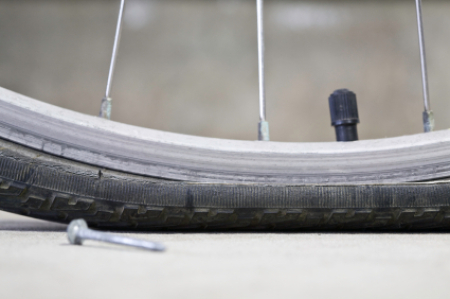 Rear tires wear faster than front ones because most of your body weight is on the back wheel. Rear tires are also responsible for your drive speed and acceleration.
Rear tires wear faster than front ones because most of your body weight is on the back wheel. Rear tires are also responsible for your drive speed and acceleration.
That means you will most likely need rear tire replacements long before you’ll need a front one. However, front tires are as important as the back ones because front traction controls your braking and steering.
You never want to experience traction loss and go crashing all the way down the road.
If you are hitting the road but discover that your back tire is worn, I can share one tip with you by moving your front tire to the rear, given that the front tire is in good shape.
You can then head to a store, get a new bike tire, and pop it in your front wheel. It’s an easy-peasy job that keeps you on the go!
Right SizeYou might get confused about the ideal tire for your bike. In this case, you have to get the size you need, which is usually marked on the side portion of your tire.
Since I could not cover all interesting topics about a bike’s potential, you can check out this informative video from GCN Tech.
We finished tackling the tire’s lifespan, including average mileage and affecting factors. You can boot a tear with one folded bill or a boot from a book patch in dire situations. If your bike got none, the Park Tool TB-2 Tire Boot is a decent choice.
Henry Speciale
“Bike commuting should be the trend for the next few years, and it is a convenient and eco-friendly way for us to travel.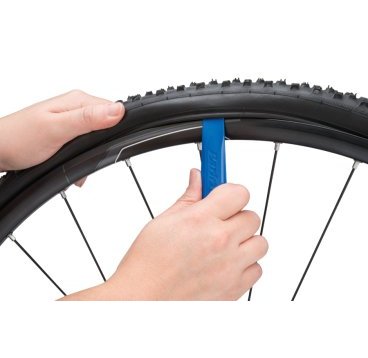 And we are here to make it a bit less troublesome for people who want to maintain their vehicle for a long time. So, the content I expect to put out here is offering help for bikers who are facing issues with parts of their bikes once in a while. Let’s have fun and protect the environment together!”
And we are here to make it a bit less troublesome for people who want to maintain their vehicle for a long time. So, the content I expect to put out here is offering help for bikers who are facing issues with parts of their bikes once in a while. Let’s have fun and protect the environment together!”
Unfortunately, not every bicycle tire is able to cover its entire resource. And again, unfortunately, there are many reasons for this. A worn out tread, for example, on MTB tires, is not a universal way to assess wear, although it is one of the main ones.
However, there are also tires without a toothy tread - road slicks, for example - what to do in this case, how to understand when to change tires?
Just about. Let's figure it out.
By the way, if you think we missed something, please share your thoughts on our Facebook page.
Perhaps the most frustrating thing is to replace a tire due to its damage during a collision with a curb, tree roots or something similar.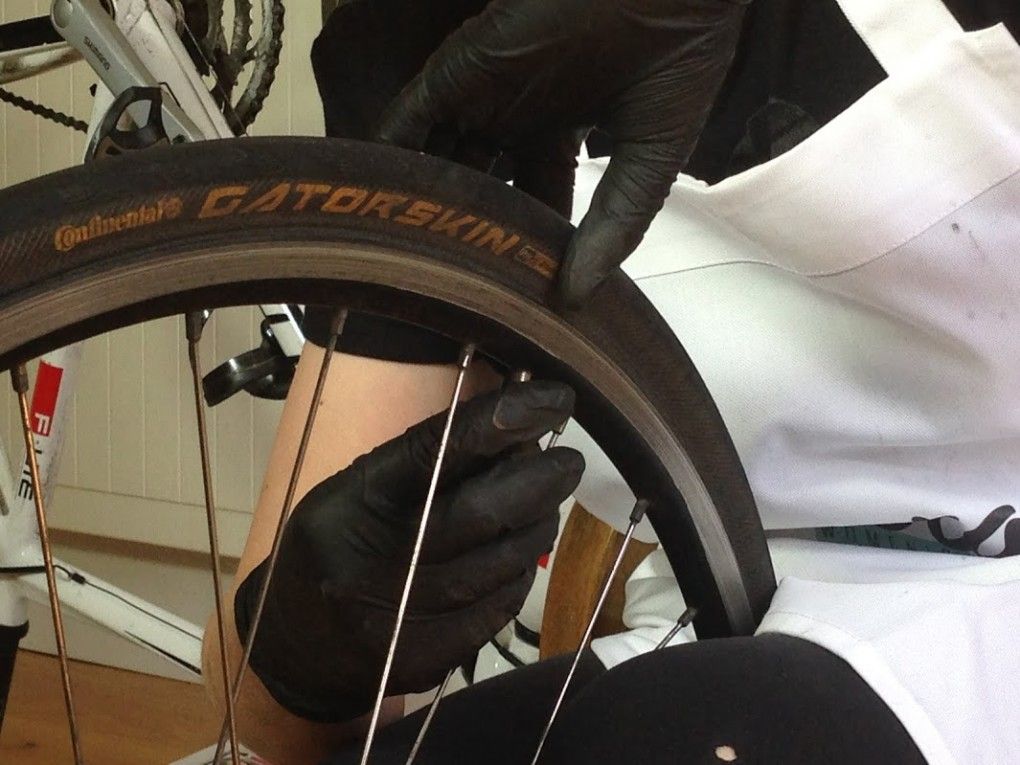 So both a new tire and a new rim can go to the trash.
So both a new tire and a new rim can go to the trash.
In most cases, the camera is broken if you have one. A so-called snake bite is formed, after which the camera cannot be repaired. It occurs during severe deformation when hitting an obstacle, when the tube is clamped between the tire and the rim. And it's good if only the camera is damaged. In some situations, the rim does not withstand, it bends, cracks, its edges are jammed, the spokes shoot out or weaken ...
And, since we're talking about tires here, it's worth mentioning the damage to them. Impact on them by the rim entails the destruction of the inner layer of rubber and/or cord on the sidewalls. The inner coating of the tire cut by the rim will begin to let air through if it is tubeless. A simple patch, placed from the inside, solves this issue.
The cut cord, unfortunately, cannot be treated. Its damage, most likely to the naked eye, may not be noticed immediately, but it will certainly manifest itself in the future.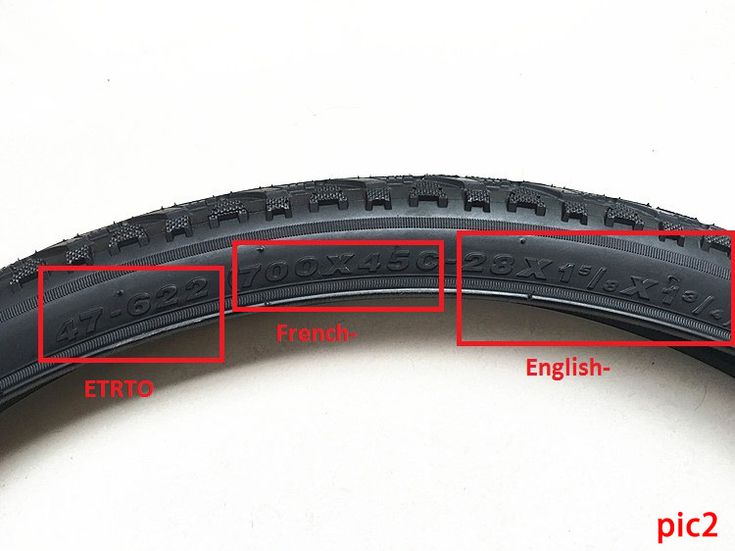 He convicts himself by the formation of bumps on the surface of the tire. People are trying to repair such a malfunction, but any of the methods does not provide an adequate level of safety during further operation. Here it is better not to “play with fire” and come to terms with the upcoming new thing.
He convicts himself by the formation of bumps on the surface of the tire. People are trying to repair such a malfunction, but any of the methods does not provide an adequate level of safety during further operation. Here it is better not to “play with fire” and come to terms with the upcoming new thing.
In any case, if you didn’t even get a clear blow to the wheel anywhere, but felt some kind of beating or a clear change in the geometry of the tire in motion, then these are the first (and sometimes the last) bells that something is wrong . It is better to stop and inspect the wheels for various kinds of damage (bumps, protruding threads, cuts, tears, delaminations).
It is of course possible to prevent unwanted costs. To do this, you need to regularly check the pressure in the wheels of your bike. The lower it is, the higher the probability of breakdown. Excessively high pressure, by the way, can also cause the cord to break or the rim to break. So, don't be zealous. Before inflating the wheels, carefully study all the inscriptions on them, the manufacturer always indicates the recommended minimum and maximum values there.
Before inflating the wheels, carefully study all the inscriptions on them, the manufacturer always indicates the recommended minimum and maximum values there.
And yes, side cuts, ply lines and snake bites are more familiar to road bike owners, as the tires are especially thin for the sake of light weight.
Absolutely any cyclist can see the wear of an MTB tire. Everything is simple here - the tread has worn off, which means the tire must be replaced. Moreover, it is not necessary to wait until it is erased to an absolutely smooth state. For its native element, such a tire becomes unusable much earlier, when the hook becomes small. If the bike rides in urban conditions, then the lack of a tread does not interfere with the hook, but only has a positive effect on it. After all, the area of \u200b\u200bcontact with the surface of the tire increases. However, other factors are beginning to come into play. Too thin a layer of the treadmill is very vulnerable, there will be more punctures. Even the anti-puncture layer can no longer cope with its task. That is, an MTB tire turned into a slick becomes simply unsuitable for further use.
Even the anti-puncture layer can no longer cope with its task. That is, an MTB tire turned into a slick becomes simply unsuitable for further use.
However, there are also MTB slicks that come straight from the factory with a smooth tread. It is better to get such tires and fully enjoy the absence of a toothy tread in the city.
How to determine wear in this case?
Good question, which brings us to road tires. Continental, for example, puts special round marks (recesses) on the treadmill. They can be used to monitor the gradual wear of the rolling surface. If they are absent, or their depth has become insignificant, then a replacement is nearing.
Other manufacturers are following the same path, their marks may differ from each other, but one thing remains in common - they disappear as the tire wears out. By the way, the applied pattern on the sidewalls of a road tire, smoothly passing to the working surface, also plays the role of a wear indicator, although not the most reliable, but still. Rubber after all is erased more in the middle part.
Rubber after all is erased more in the middle part.
Yes, it is in the middle and often this leads to the formation of a “square” profile, which is also a signal for replacement.
As for MTB slicks, I have never seen such marks on such wheels. I drove until the threads began to climb out or the anti-puncture layer appeared. Different manufacturers have it in different colors, but if you have already seen it (or cord threads), then the next trip should take place just for the tires.
Yes, I have already mentioned them. By itself, an ordinary puncture causes some damage to the tire, but is not critical for further use. Of course, we are talking now about minor punctures with thorns, small pieces of glass, self-tapping screws, nails and glasses. No, it didn’t seem to you) there were such cases in practice. In general, there are quite a few items that can attack your rubber, but in most cases this does not happen often. Especially rarely punctures occur in the presence of an anti-puncture layer.
So, if the frequency of punctures has increased and comes from the smallest pieces of glass or pebbles, then this is a clear sign of excessive wear. This is due to the thinning of the working surface of the tire, the only way to correct the situation is to replace it. By the way, even the presence of an anti-puncture layer is not a panacea; with a thin layer of the treadmill, its effectiveness decreases.
The bead is a part of the tire that contains Kevlar fibers or steel wire, popularly called the “cord”, which is fundamentally wrong. If, when inflating a wheel, the tire comes off the rim, then, of course, there is no point in playing with it, it goes to the scrap, and you go to the store. The point here is the damaged board, which is almost impossible to track visually. Well, if it has obvious damage (rust, for example) or a cut, then there is no need to talk about the applicability of such a tire on a bicycle. I don’t even know if it’s worth saying that such rubber tends to be sorted out in motion.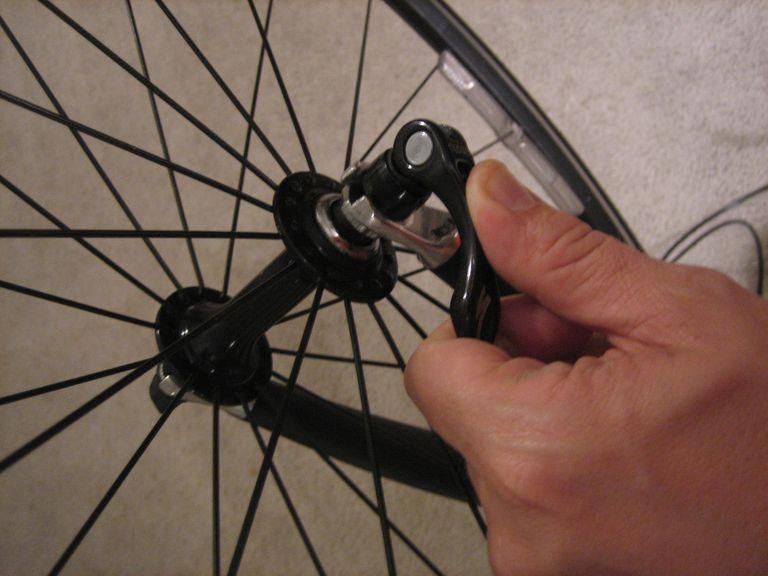
All this means that saving on tires is not desirable. They cost no more than money. It also makes no sense to resort to frankly cheap options, since in the end, the operation of a bicycle will cost much more.
We have already mentioned cuts and penetrations of the sidewalls by the rim. And now we want to pay attention to another nuance associated with them. The sidewalls of any tire become unusable when the bicycle is operated at reduced pressure. Of course, if you put a child weighing 15 kg on a bike, then the minimum value can be lowered, but up to a certain limit. The sidewall should not be excessively deformed, otherwise its gradual destruction and increased wear of the chamber will occur. The latter leads to the replacement of the chamber, since its walls worn into dust will simply tear when trying to pump up after repair.
The second point about the sidewalls concerns bike storage. So it happens that sometimes the bike stands for a long time without movement and its wheels go down.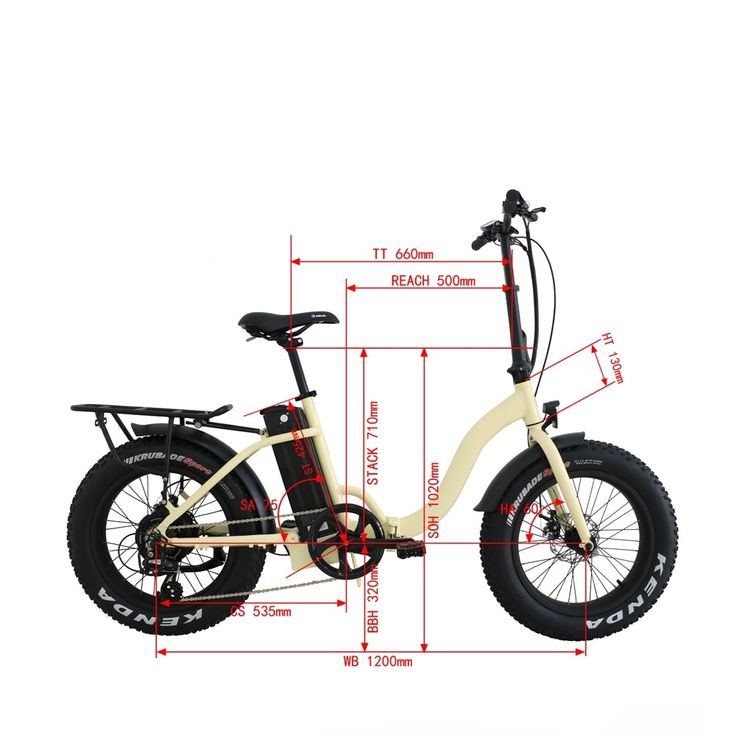 Prolonged exposure to such a deformation does not bode well, the rubber cracks, the cords are damaged. This effect is especially pronounced when the bike is not stored in a warm and ventilated room. Then the entire sidewall is covered with numerous cracks, and the rubber loses its properties. That is, it makes sense to occasionally visit a bicycle with a pump. At least once a month to keep his wheels running.
Prolonged exposure to such a deformation does not bode well, the rubber cracks, the cords are damaged. This effect is especially pronounced when the bike is not stored in a warm and ventilated room. Then the entire sidewall is covered with numerous cracks, and the rubber loses its properties. That is, it makes sense to occasionally visit a bicycle with a pump. At least once a month to keep his wheels running.
The front tire on any bike wears out much more slowly than the rear. Many cyclists prefer not to burden themselves with extra costs and simply move the rear tire forward and the front back.
Well, this seems to be the perfect way. But, alas, it is not.
Installing more worn tires on the front wheel (both highway and MTB) entails a significant change in handling. In road racing, “square” tires are unlikely to behave better in corners than round ones. In MTB bikes, we are talking about a tread, the presence of which on the front wheel is very critical.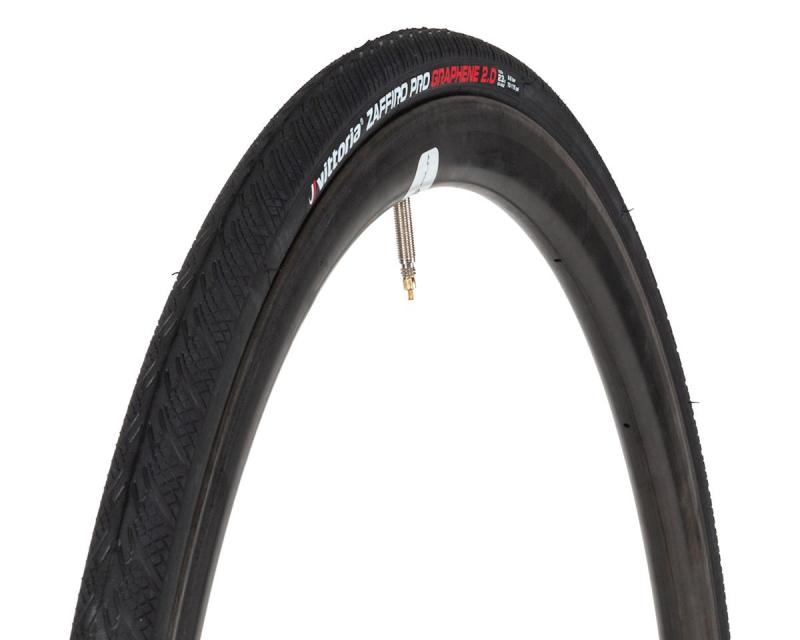 After all, it is quite simple to deal with a slippery rear wheel, but with the front one it is much more difficult, and more often it is simply impossible.
After all, it is quite simple to deal with a slippery rear wheel, but with the front one it is much more difficult, and more often it is simply impossible.
Full name
Borik Vladimir
Passionate cyclist since 2014. He could not stand it when the bike made extraneous sounds in motion, which made him go over everything, re-grease and renew it many times. He likes to delve into the subtleties, therefore, numerous bulkheads of his bike later turned into a job as a bike mechanic. I went from Shimano Acera to Comance Tomahawk through SLX to XTR to Specialized S Works, and then just switched to a budget road bike on Campagnolo Xenon 10 equipment. Kuyalnik 2019 bike marathon (MTB) behind-year, where Light took 5th place on the route. Currently remains an active bicycle user and continues to deepen his knowledge in this area.
Many cyclists waste money replacing tires that still perform well just because they are old or have discolored sidewalls.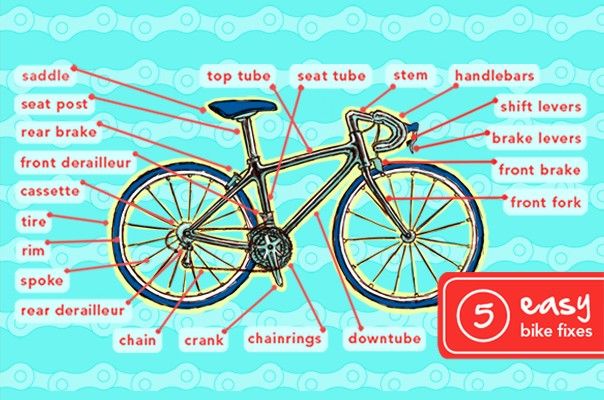 When to change bike tires?
When to change bike tires?
Contents of the article
In the event that you want to install new tires just because the old ones look ugly, then it's your money and your business. If you care about safety and functionality, there are only two reasons to replace old tires.
1. In the case where the tire tread is so worn that there are many punctures from small pieces of glass and the like, or the tire carcass is exposed from the rubber.
2. The carcass of the tire is damaged, which manifests itself in the fact that the tire has bumps and bumps on the surface, or the tube is squeezed through the tire.
Cracked tread is not dangerous. Small punctures in the tire caused by nails, spikes, or small pieces of glass are also harmless, since the tire does not need to be sealed.
Experienced bike mechanics pay great attention to wheel stamp placement. A simple rule for tires is to place the stamp near the spool, facing right. This is justified by the fact that, knowing the standard sign when mounting tires, it is easier to detect a spike or a piece of glass, guided by the location of the hole in the removed chamber. There is common sense in this and placing a stigma according to a certain principle is a sign of qualification and a good attitude to business.
Read more When to change bicycle tires
Bicycle tire failure due to complete tread wear is considered normal. But, very often it happens much earlier. The main factors that affect its durability and premature wear:
— proper preparation for operation;
- tire load control;
- maintaining optimal pressure;
- observance of the braking mode;
- road conditions;
- weather and climatic conditions;
- temperature range;
- storage conditions.
Bicycle tire wear is a complex and multifactorial phenomenon and is the result of physical-chemical and physical-mechanical processes occurring in it. Under the influence of physical and mechanical processes on the tire, its abrasion, breakdowns, punctures, carcass ruptures, carcass delamination, etc. occur. Physical and chemical processes occurring in the material from which the tire is made largely depend on the conditions in which it is located:
- too low and high temperatures;
- light;
- high humidity;
- increased oxygen content.
Read more Bicycle tire wear
Bicycle tire damage can be classified as follows:
Damage caused by wear.
Damage caused by external factors (cuts).
Minor damage (breaks and punctures).
Bicycle tire wear
Bicycle tire wear is a rather complex process. It is generally accepted that the main wear of the tire falls on the place where it touches the ground. But, wear also occurs at the points where the tire contacts the wheel rim, especially when riding on tires with low pressure. This phenomenon must be monitored in the same way as the tread, because a heavily worn tire side surface is much less noticeable than a worn tread.
But, wear also occurs at the points where the tire contacts the wheel rim, especially when riding on tires with low pressure. This phenomenon must be monitored in the same way as the tread, because a heavily worn tire side surface is much less noticeable than a worn tread.
In addition, the surface of the tire can be quickly rubbed off by poorly adjusted v-brakes or poor quality rims with sharp edges. As a result of damage, the sidewall of the tire is bursting from the inside with a chamber and a “hernia” will occur.
Read more Bicycle Tire Damage
To prolong the life of your bicycle tire, follow a few simple tips.
Mounting and dismounting of tires must be carried out carefully and accurately. No extra force should be applied to the side surface of the tire. The tool (blade) must be free of burrs and cutting edges.
Correct fitting of the tube to the tire is very important. Excessive expansion of the bladder, as well as wrinkling of the bladder due to insufficient expansion, can cause the bladder to rupture and cause damage to the inner surface of the tire.
Before inflating the tire, the tube valve nut, if any, must be tightened and tightened during inflation.
Inflation pressure should be maintained according to tire load and road conditions. No need to save time and inflate tires in a timely manner. In hot weather, the internal pressure in the tire increases, so it is necessary to release excess air in time.
Read more How to extend the life of a bicycle tire
The main materials for bicycle tires are compound and rubber. Natural rubber is made from rubber, which is extracted from the sap of rubber trees. But, due to the fact that this method of obtaining rubber is very expensive and is simply not enough for all trees, synthetic rubber is used to make bicycle tires, from which oil-petrol-resistant rubber is produced, adding soot to it, followed by vulcanization.
The amount of filler affects the properties of the rubber. With too much of it, the properties of rubber deteriorate, such as wear resistance, although its cost is much reduced.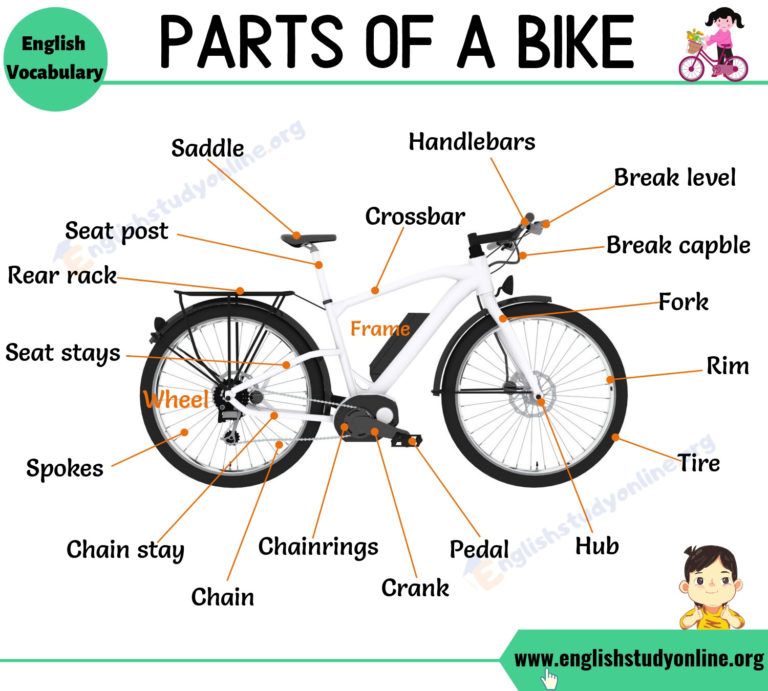
How to check the quality of a rubber tire
It is necessary to look at the overall quality of the tire - the presence of excess rubber influx, the curvature of the tire, the quality of the bead cord. You should not use curved tires, with “accordions” and folds, and those with a bent bead cord. These defects are not corrected when the tire is inflated.
If you run a dry finger over the surface of the rubber with strong pressure and a noticeable dark mark remains on it, then there is too much filler in the rubber and such rubber will not last long.
Read more Checking the quality of a bicycle tire
In order to ride a bicycle safely and efficiently in winter, it is necessary to use special tires. As winter tires, off-road tires with a high and rare tread pattern or studded tires can be used. It all depends on the condition of the road. Tires with an aggressive pattern can be used on snowy roads or off-roads with snow.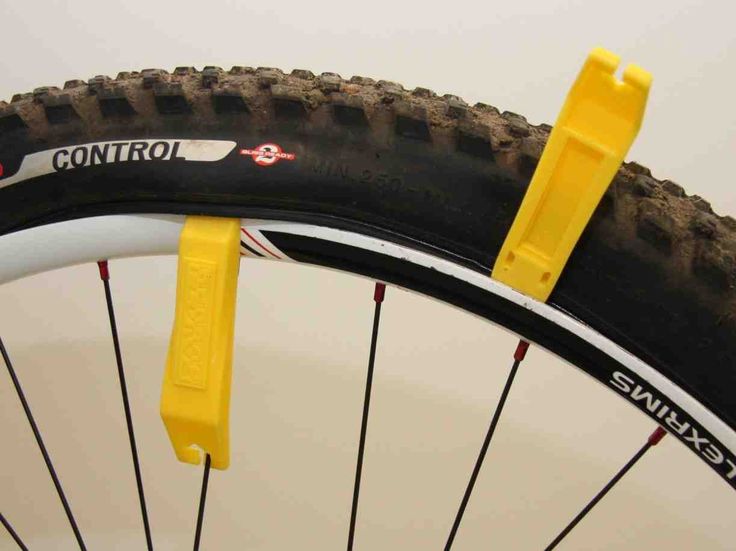 When driving on ice, icy roads or dense snow, studded tires are indispensable.
When driving on ice, icy roads or dense snow, studded tires are indispensable.
As with a car on a bicycle, unlike non-studded tires, studded tires need to be run in. Manufacturers of studded bicycle tires recommend running them in for 40-50 kilometers on paved roads. In this case, sudden braking and acceleration should be avoided.
In order for the studs to take their place in the tire, you must first brake carefully. Even with careful use of studded tires, some studs can be lost due to friction. This is acceptable and does not affect the overall performance of the tire.
Read more Breaking in studded bicycle tires
As a general rule, bicycle front tires last three times longer than rear tires. This is because the rears carry much more weight than the fronts. The second reason for increased rear tire wear is that the rear wheel of the bike is the drive wheel. The wear bias is even greater on bikes that use rear brakes.
Very smart and practical cyclists (forgive them), and sometimes even “professional” bike mechanics (but they don’t), can’t think of anything more original to deal with the above phenomenon, how to rearrange bicycle tires in places.